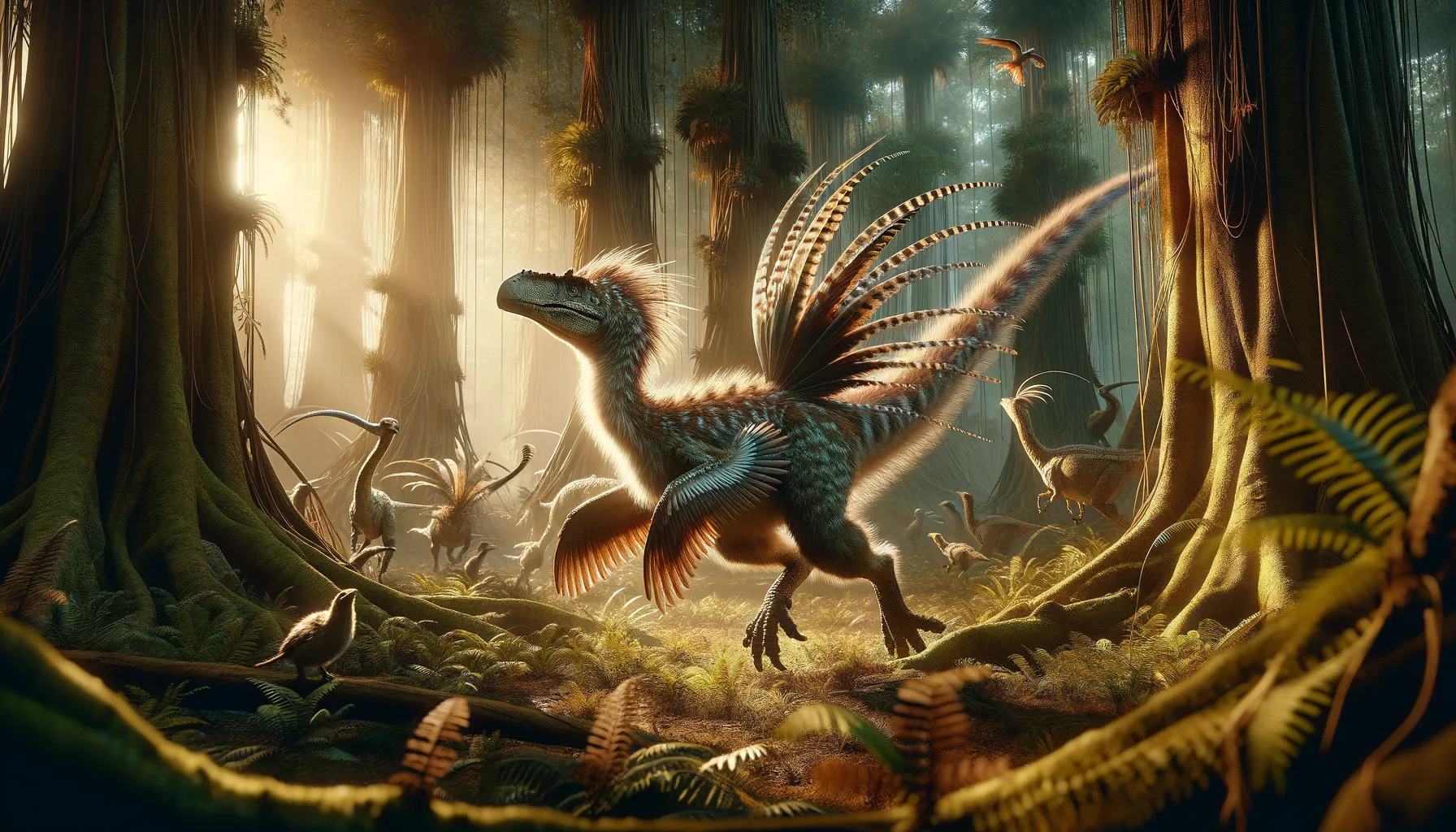
Rahona
Linking dinosaurs to modern birds.
Period
Cretaceous
Length
Approximately 0.75 meters long.
Height
Estimated at 0.5 meters tall.
Weight
Around 1.5 to 2 kilograms.
Rahona was a small, agile dinosaur that lived during the Cretaceous period. Known for its bird-like features, it represents a fascinating link between dinosaurs and modern birds. With feathers and distinct skeletal structures, Rahona provides crucial insight into avian evolution. Its swift, agile movements and carnivorous diet allowed it to thrive in its environment, making it a remarkable subject of study for paleontologists exploring the transition from dinosaurs to birds.
Diet
Rahona primarily fed on small animals like insects and other small vertebrates. Its agile nature and sharp claws suited this carnivorous diet well.
Hunting
Rahona likely hunted alone, using its rapid movements and keen vision to catch prey. It may have relied on ambush tactics, swiftly engaging unsuspecting animals.
Environmental challenges
Rahona faced challenges such as competition for food with other predatory species and the need to adapt to growing environmental changes. Predation pressure from larger carnivores would have been a constant threat. The shifting landscapes of the Cretaceous must have required adaptability in lifestyle and diet.
Speed
Quick and nimble with bird-like agility.
Lifespan
Lived for approximately 10 to 20 years.
First discovery
Discovered in 1995 in Madagascar.
Fun Facts
- Rahona was a small dinosaur from the Late Cretaceous period, discovered in Madagascar.
- Its name, Rahona, means 'cloud' in the Malagasy language.
- This dinosaur is believed to have had feathers, similar to modern birds.
- Rahona is known for its large, sickle-shaped claw on its second toe, which it likely used for hunting or defense.
- It shares some features with both birds and other theropod dinosaurs, showing their evolutionary link.
- Rahona had a wingspan that suggests it might have been capable of gliding or brief flights.
- Only partial remains of Rahona have been found, leaving much about its life a mystery.
Growth and Development
Young Rahona, starting from hatchlings, would have required considerable parental care or developed survival skills early. Rapid growth might have been advantageous in escaping predators quickly. As Rahona matured, its physical and hunting skills evolved to match its environment.
Habitat
Rahona inhabited what is now Madagascar, a region with diverse ecosystems during the Cretaceous. It lived in an area rich with flora, providing ample cover and hunting grounds. Periodic changes in climate and vegetation would have influenced its habitat preference.
Interaction with other species
Rahona interacted with a variety of small to medium-sized predators, competing for similar food resources. It likely had a dynamic relationship with herbivorous species, possibly preying on their young. Its presence would have influenced the ecological balance, impacting prey and competitor species alike.
Natural lifespan
Lived about a decade or two in the wild.
Reproduction
Rahona likely laid eggs, similar to modern birds, in well-protected nesting sites. Parental care might have played a significant role in the survival rates of its offspring. Social structures during mating season could have included displays or vocalizations to attract mates.
Social behaviour
Rahona may have been solitary or lived in small groups, especially during the breeding season. Interactions among individuals could range from cooperative hunting to competitive displays. Social structures were likely influenced by the need for territoriality and resource availability.
Fossil locations
Fossils of Rahona have been predominantly found in Madagascar. These discoveries have been essential in understanding the biodiversity of the region during the Cretaceous. The preservation of its remains provides significant clues to its anatomy and lifestyle.
